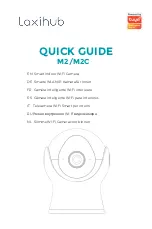
V1.02
Thom Hogan’s Complete Guide to the Nikon D300
Page 101
should follow this advice for the second battery). Below
the 5% level you’ll want to switch batteries if you can, as
VR, autofocus, and other major power drains can catch
you unawares and leave you without the picture you just
shot. I’d double that cut-off value if I were using the WT-
4, a GPS, or tethered to a computer. That said, I’ve run
batteries down to the 0% mark—the meter is that
accurate.
What I’m trying to point out is that once you’re below the
5% mark, heavy current loads can make the camera
power down suddenly, so you usually want to replace
batteries to avoid potentially missing a shot, especially if
you’re filling the buffer. In a pinch, though, you can take
the battery right down to empty. If you do, I’d recommend
you do it one shot at a time, though.
Overall, it’s generally not a good idea to run your battery
completely down (below 5%), as you risk a “deep
discharge” cycle if you do and don’t immediately get the
battery onto the charger. You can take batteries down
until exhaustion if you have to, but you shouldn’t do this
regularly, and you should immediately put a battery
discharged this way on the charger, if possible.
Overall, the D300’s battery performance is decent. By
minimizing use of a few power-hungry features and shooting
only JPEG, you can easily get by on one battery in a full day
of shooting (and I mean
full
).
Two fully-charged batteries are all I’ve ever needed shooting
NEF images on my D300 during a full day, and that seems to
be true for others I’ve talked to, as well. (Again, this might not
apply if you’re using the wireless transmitter, GPS,
Microdrives, connecting to a computer, or printing with
PictBridge.) The problem for me comes with multi-day trips in
the backcountry, where I used to be able to carry two EN-EL3
batteries with my D70 and come out the other end of the trail
a week later still taking pictures. With the D300, that won’t















































